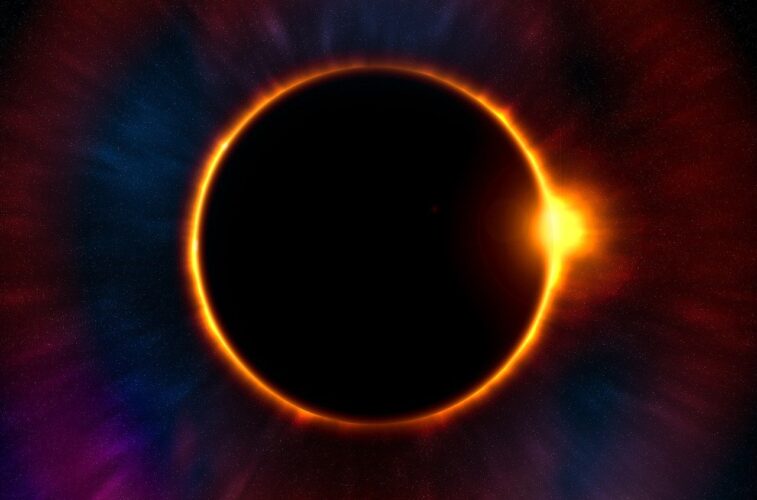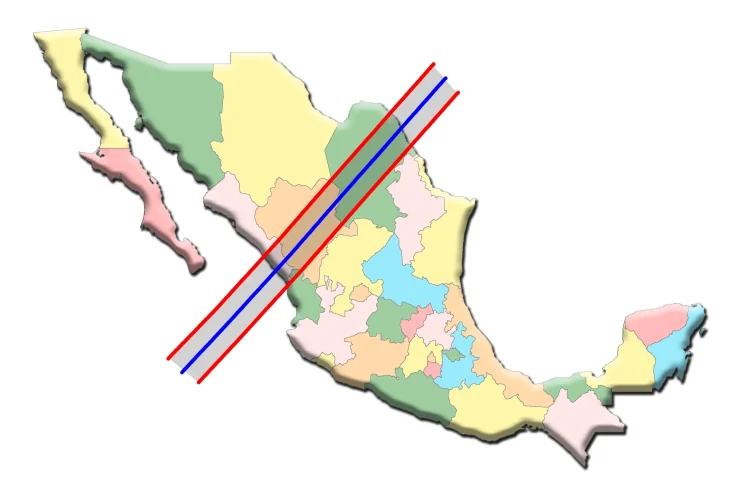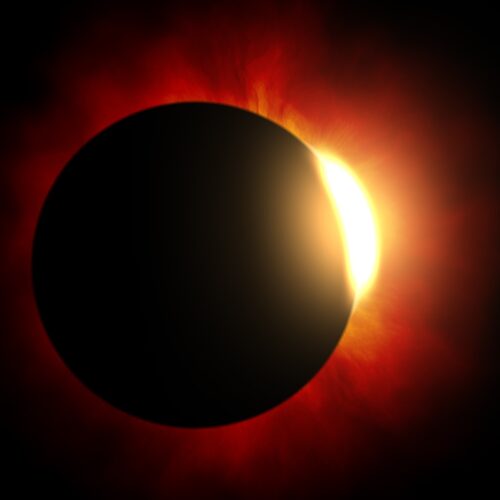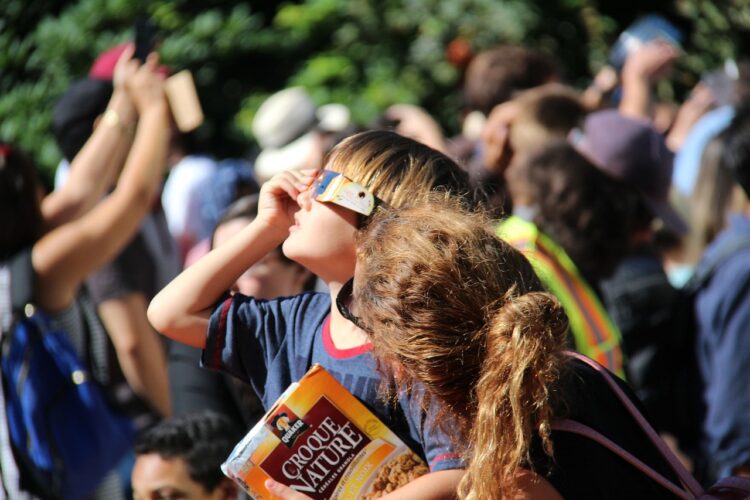
Get ready for April 8, 2024 when you will get to witness one of nature’s most awe-inspiring phenomena—the total Solar Eclipse 2024! This rare celestial event promises to captivate audiences across Mexico and North America as the moon momentarily blocks the Sun, casting a shadow on Earth. Join us as we explore everything you need to know about this extraordinary spectacle, from its origins and types to when and where it will occur, and what to expect during this remarkable event.
Table of Contents
What is a Solar Eclipse?
A solar eclipse occurs when the moon passes between the Earth and the Sun, casting its shadow on our planet. This alignment can result in three types of solar eclipses: total, partial, and annular. During a total solar eclipse, the moon completely covers the Sun, revealing its ethereal corona—the outer atmosphere of the Sun.
- Total Solar Eclipse:
- Occurs when the moon completely covers the Sun, blocking all direct sunlight.
- Reveals the Sun’s outer atmosphere, called the corona, during totality.
- Viewable only along a narrow path on Earth’s surface.
- Spectacular and rare event, lasting only a few minutes.
- Partial Solar Eclipse:
- Occurs when the moon partially covers the Sun, blocking only a portion of sunlight.
- Creates a crescent-shaped Sun as seen from Earth.
- Viewable from a broader area than total eclipses.
- More common than total eclipses, but less dramatic.
- Annular Solar Eclipse:
- Occurs when the moon is farther from Earth and appears smaller in the sky.
- Does not completely cover the Sun, leaving a ring of sunlight visible around the moon’s edges.
- Creates a “ring of fire” effect during maximum eclipse.
- Viewable along a narrow path on Earth’s surface.
When & Where to View
The Solar Eclipse of 2024 will take place on April 8, 2024. The path of totality, where the eclipse will be visible in its entirety, will span from Mexico to Canada.
In Mexico

The path of totality will offer residents and visitors in several states the opportunity to witness the total solar eclipse. Here are the approximate times for the beginning and end of totality in each state:
- Durango: Totality begins around 12:15 PM MDT and ends around 12:18 PM MDT.
- Coahuila: Totality begins around 12:18 PM CDT and ends around 12:22 PM CDT.
- Nuevo León: Totality begins around 12:21 PM CDT and ends around 12:25 PM CDT.
- Tamaulipas: Totality begins around 12:24 PM CDT and ends around 12:28 PM CDT.
In the United States
Click here for an integrated map, click your location and see what you will witness!!
The path of totality will pass through various states, offering observers a rare opportunity to witness the total solar eclipse. Here are the approximate times for the beginning and end of totality in each state:
- Texas: Totality begins around 1:21 PM CDT and ends around 1:24 PM CDT.
- Oklahoma: Totality begins around 1:23 PM CDT and ends around 1:25 PM CDT.
- Arkansas: Totality begins around 1:24 PM CDT and ends around 1:27 PM CDT.
- Missouri: Totality begins around 1:26 PM CDT and ends around 1:29 PM CDT.
- Illinois: Totality begins around 1:20 PM CDT and ends around 1:23 PM CDT.
- Kentucky: Totality begins around 1:26 PM CDT and ends around 1:30 PM CDT.
- Indiana: Totality begins around 1:26 PM CDT and ends around 1:30 PM CDT.
- Ohio: Totality begins around 1:28 PM EDT and ends around 1:33 PM EDT.
- Pennsylvania: Totality begins around 1:30 PM EDT and ends around 1:35 PM EDT.
- New York: Totality begins around 1:30 PM EDT and ends around 1:35 PM EDT.
- Vermont: Totality begins around 1:32 PM EDT and ends around 1:37 PM EDT.
- New Hampshire: Totality begins around 1:33 PM EDT and ends around 1:38 PM EDT.
- Maine: Totality begins around 1:34 PM EDT and ends around 1:39 PM EDT.
These times provide an estimate of when observers in each state can expect to experience the breathtaking sight of totality during the Solar Eclipse of 2024. It’s essential to consult local authorities or astronomical organizations for precise timings and viewing locations.
In Canada
Unfortunately, the path of totality for the Solar Eclipse of 2024 does not pass through any Canadian provinces. Therefore, residents and visitors in Canada will only be able to observe a partial solar eclipse during this event. The extent of the eclipse’s visibility in Canada will vary depending on the location within the country. However, here are approximate times for the peak of the partial eclipse in some major Canadian cities:
- Toronto, Ontario: Maximum eclipse occurs around 3:28 PM EDT.
- Montreal, Quebec: Maximum eclipse occurs around 3:30 PM EDT.
- Vancouver, British Columbia: Maximum eclipse occurs around 12:11 PM PDT.
- Calgary, Alberta: Maximum eclipse occurs around 12:10 PM MDT.
These times provide an estimate of when observers in major Canadian cities can expect to see the maximum coverage of the Sun by the moon during the partial solar eclipse of 2024. It’s essential to consult local authorities or astronomical organizations for precise timings and viewing tips based on specific locations within Canada.
How Often Does a Solar Eclipse Occur?

Total solar eclipses are relatively rare events, occurring approximately once every 18 months somewhere on Earth. However, the frequency of total eclipses in a specific location can vary due to factors such as geographic location and the path of totality.
Frequency of Total Solar Eclipses:
- Total solar eclipses occur relatively infrequently on Earth, with an average frequency of about once every 18 months.
- This frequency arises from the alignment of the Earth, moon, and Sun, where the moon’s orbit intersects with the Earth’s orbit around the Sun at specific points in time.
- The Earth orbits the Sun on a plane called the ecliptic, while the moon’s orbit is inclined at about 5 degrees to the ecliptic. This inclination means that the moon’s shadow usually passes above or below the Earth during its orbit, resulting in partial rather than total eclipses.
- When the alignment is just right, and the moon’s shadow intersects with Earth, a total solar eclipse occurs.
Variation in Frequency by Location:
- While total solar eclipses occur approximately every 18 months somewhere on Earth, their frequency can vary significantly depending on geographic location.
- The path of totality, where the total eclipse is visible, is relatively narrow and can shift with each eclipse.
- Therefore, certain locations may experience total eclipses more frequently than others if they happen to lie within the path of totality more often.
- For example, locations near the equator or along the central path of totality may experience total eclipses more frequently than locations farther from the path.
Impact of the Path of Totality:
- The path of totality is the region where the total eclipse is visible in its entirety.
- The width and duration of totality vary depending on factors such as the moon’s distance from Earth and the Earth’s distance from the Sun.
- The path of totality can pass through different regions with each eclipse, affecting which locations experience totality and how frequently they do so.
- For observers within the path of totality, the frequency of total solar eclipses may be higher compared to those outside the path.
While total solar eclipses occur approximately every 18 months somewhere on Earth, the frequency of total eclipses in a specific location can vary due to factors such as geographic location and the path of totality. Understanding these factors helps explain why some locations experience total eclipses more frequently than others.
What to Expect with Solar Eclipse 2024
During the Solar Eclipse of 2024, viewers across the United States can expect a range of phenomena. As the moon obscures the Sun, the sky will darken, and temperatures may drop slightly. In areas of totality, observers will experience a brief period of darkness, akin to twilight, lasting a few minutes. It will not be as dark as night, but stars and planets may become visible in the sky.
1. Darkening Sky and Temperature Drop:
- As the moon moves in front of the Sun, gradually blocking its light, the sky will darken noticeably.
- The decrease in sunlight can lead to a drop in temperatures, creating a cooling effect.
- This sudden change in lighting and temperature can create a surreal atmosphere, adding to the sense of anticipation and wonder.
2. Changes in Animal Behavior:
- Animals, both domestic and wild, may exhibit unusual behaviors in response to the eclipse.
- Birds may become quiet or stop singing as they perceive the darkening sky as a signal of impending nightfall.
- Other animals may also display altered behaviors, such as seeking shelter or becoming more active.
3. Chirping of Crickets:
- As the eclipse progresses and darkness envelops the landscape, crickets and other nocturnal creatures may become more active.
- The onset of darkness can trigger chirping in crickets, a behavior typically associated with nighttime.
4. Activation of Streetlights:
- In urban areas equipped with automatic streetlights, the sudden decrease in sunlight may trigger their activation.
- Streetlights equipped with light sensors may turn on in response to the darkening sky, even during daylight hours.
5. Twilight-Like Darkness in Areas of Totality:
- Observers within the path of totality will experience a dramatic transformation as the moon completely blocks the Sun.
- During totality, the sky will darken significantly, resembling twilight rather than nighttime.
- While it will not be as dark as nighttime, the darkness will be profound enough to allow stars and planets to become visible in the sky.
- Viewers may witness the appearance of bright stars and planets that are usually obscured by the Sun’s glare during the day.
The Solar Eclipse of 2024 will not only offer a rare astronomical spectacle but also an opportunity to observe and experience a variety of fascinating natural phenomena. From the darkening sky and temperature drop to changes in animal behavior, the eclipse promises to be a memorable event for observers across its path.
Safety Precautions

Safety precautions are crucial when viewing a solar eclipse due to the potential risks associated with direct exposure to the Sun’s intense rays. Here’s a detailed explanation of safety precautions and the dangers of viewing an eclipse:
1. Eye Protection:
- The most critical safety precaution during a solar eclipse is protecting your eyes from harmful solar radiation.
- Looking directly at the Sun, even during an eclipse, can cause severe eye damage, including permanent blindness.
- To safely view a solar eclipse, always use solar viewing glasses that meet international safety standards (ISO 12312-2).
- Regular sunglasses, homemade filters, or unapproved viewing devices are not safe for eclipse viewing and can cause irreversible eye damage.
2. Proper Equipment:
- When using solar viewing glasses, ensure they are in good condition, with no scratches, cracks, or damage to the lenses.
- Check for the ISO 12312-2 certification label to confirm the glasses’ safety standards.
- If using a telescope, binoculars, or camera to photograph the eclipse, ensure they are equipped with a solar filter specifically designed for solar viewing.
3. Indirect Viewing Methods:
- If you don’t have access to solar viewing glasses or proper equipment, consider using indirect viewing methods to observe the eclipse safely.
- Indirect methods include pinhole projectors, solar viewing cards, or even watching the eclipse’s shadow cast on the ground through tree leaves.
4. Children and Pets:
- Supervise children closely during the eclipse and ensure they understand the importance of eye safety.
- Keep pets indoors or under supervision to prevent them from looking directly at the Sun.
5. Beware of Counterfeit Glasses:
- Be cautious of counterfeit solar viewing glasses sold by unauthorized vendors, especially online.
- Purchase glasses from reputable sources or verified manufacturers to ensure their safety and effectiveness.
Dangers of Viewing Without Protection:
- Without proper eye protection, viewing a solar eclipse can lead to solar retinopathy, a condition where the Sun’s rays damage the retina, causing permanent vision loss.
- The Sun’s intense radiation can burn the sensitive cells of the retina, leading to irreversible damage.
- Symptoms of solar retinopathy may not be immediately apparent, so it’s essential to prioritize eye safety at all times during the eclipse.
Other Questions
Where Can I Buy Solar Viewing Glasses? Check out this link for AAS Approved 2024 Solar Glasses.
How Can I Photograph the Eclipse Safely? Click here to learn how to film the eclipse with a mobile phone.
What if I’m Not in the Path of Totality? Click here to learn more about what to see and do if you’re not in the path.
Will Weather Conditions Affect Visibility? Click here to learn more about weather concerns.
How Can I Safely View the Eclipse with Children? Click to learn how to protect your children while viewing.
Are There Virtual Viewing Options Available? Click here to watch the Solar Eclipse 2024.
